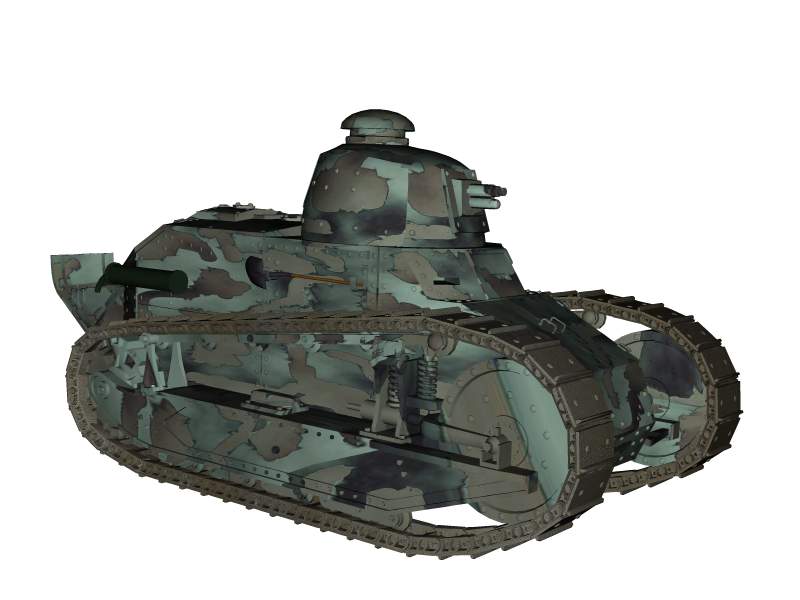Smith & Wesson Revolvers M1905, M1917 and 0.38/200 from World War One and Two.
History, development, specifications, statistics, pictures and 3D model.
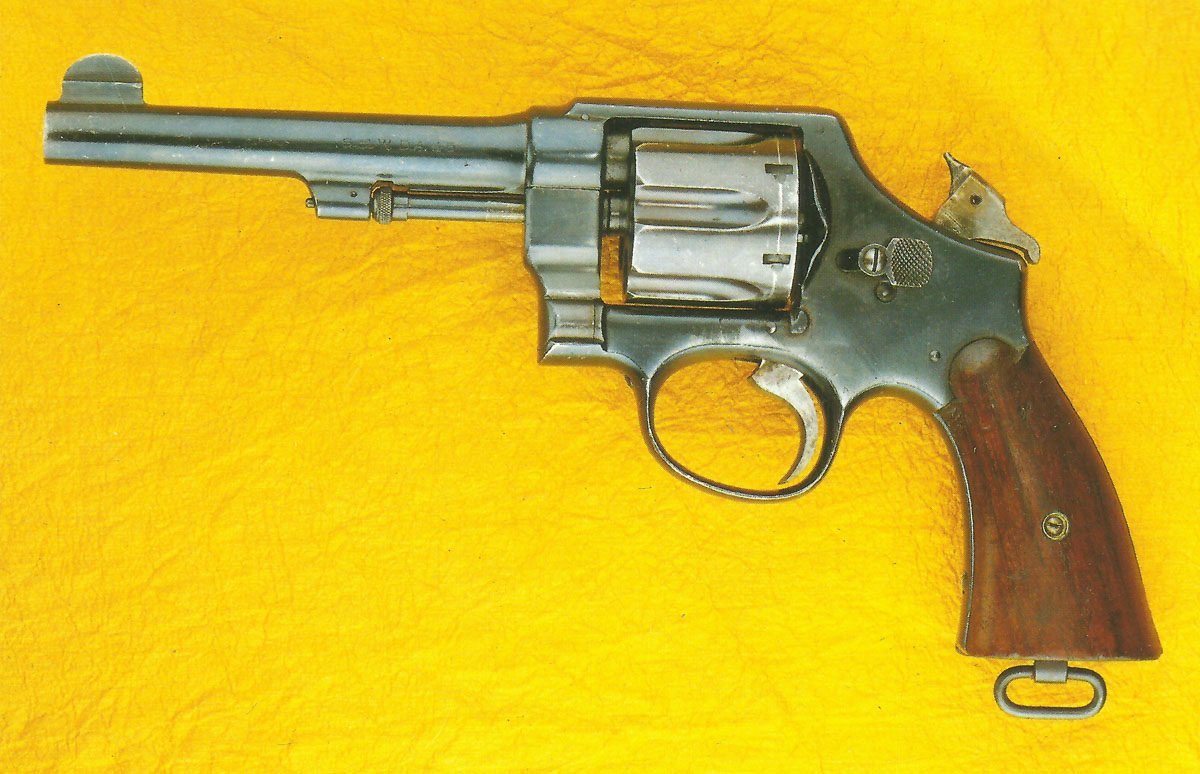
Smith & Wesson Revolvers M1905, M1917 and 0.38/200
Table of Contents
In the middle of the nineteenth century, widespread revolvers with cartridges in a rotating drum behind the barrel appeared. This allowed several shots to be fired in a row without reloading.
After the standard cartridge with metal cases was introduced, the revolver models were reduced to a few types and remained for decades in the armament of all armed forces. At the end of the nineteenth century, the American manufacturers Colt and Smith and Wesson began supplying revolvers in which the drum is swung sideways for loading and this design feature is still used today.
During the First World War, pistols and revolvers were still worn mainly by officers for personal defense. During the Second World War, however, handguns were used to an extent never seen before. On all fronts, in addition to officers, soldiers of special and commando units, paratroopers, scouts, tank crews, non-commissioned officers and soldiers with heavy weapons – such as machine guns and mortars – also used revolvers and increasingly automatic pistols.
Revolvers were used mainly by the British and American armed forces, but also by the Red Army in combat. The Smith and Wesson revolvers were one of the most widely used revolver types in the American and British armed forces during the First and Second World Wars.
Smith & Wesson M1905
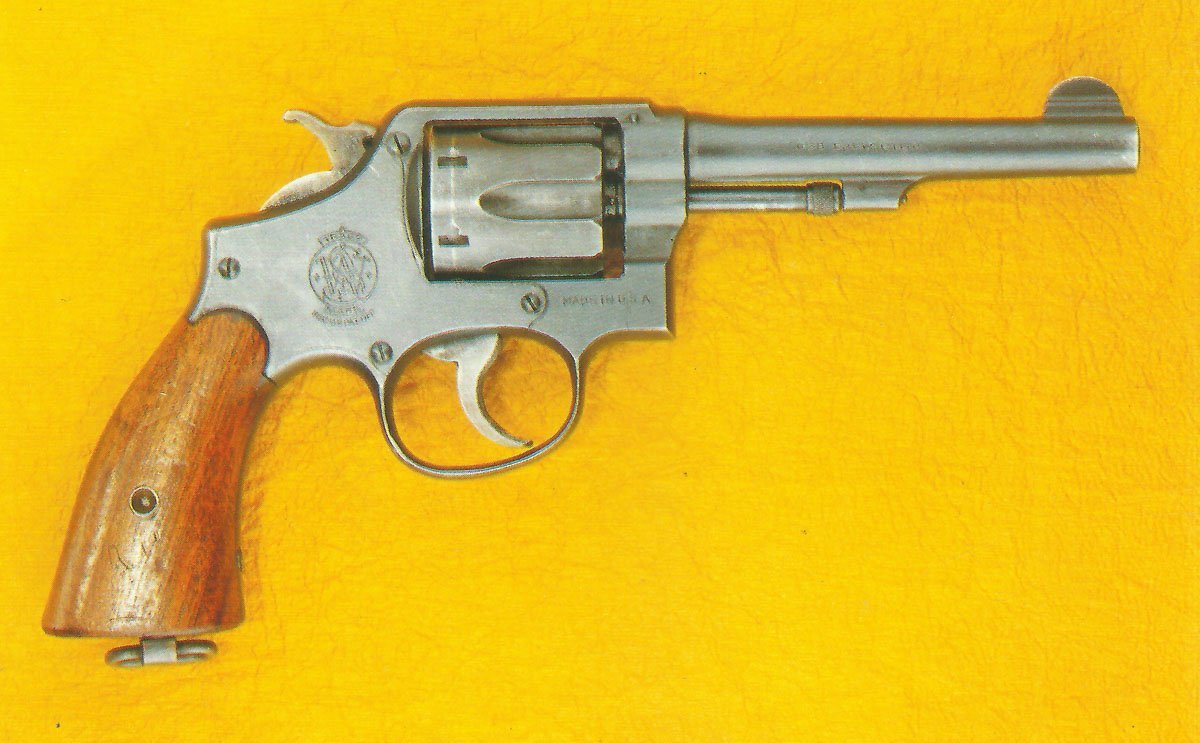
0.38-inch M1905 ‘Victory
Type: Revolver.
The Smith & Wesson M1905 revolver was widely used in the First and Second World Wars by the armed forces of the United States and Great Britain.
The gun was developed from the 1902 Military and Police model and was built from May 1905 to 1953. In total, more than 2.5 million pieces were delivered.
The standard revolver had a double motion trigger system (double action) with til table drum. The weapons manufactured for the military were supplied with phosphate surfaces and smooth wooden grips. They were called Smith and Wesson Victory.
Smith & Wesson M1917
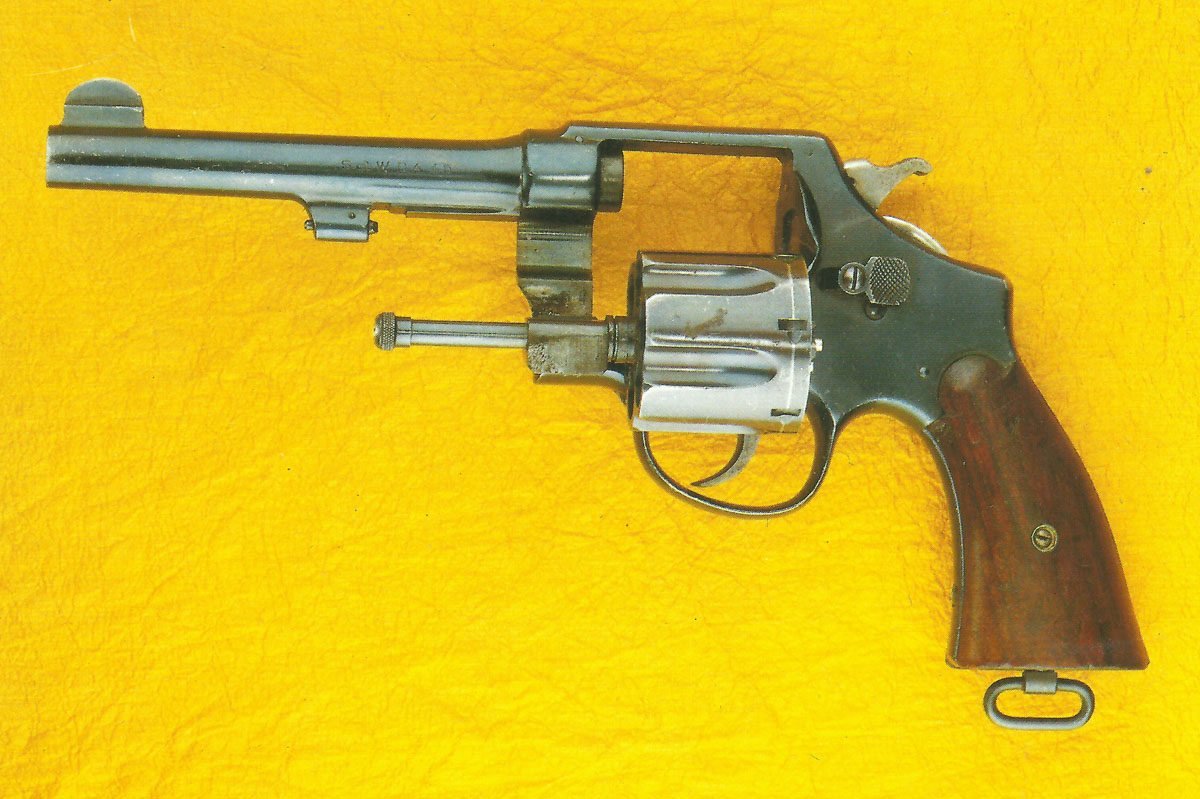
0.45in M1917
Type: Revolver.
By 1916 the demand for war material and weapons of all kinds exceeded the production capacities of the British and Commonwealth industries, so that orders for various items of equipment were placed in the USA.
Among them were revolvers and to save time it was decided to introduce American designs which were modified to shoot the British 0.455 inch (actually a 0.441 inch and thus 11.2 mm) pistol cartridge.
Many thousands of these pistols were accordingly put into production by Smith & Wesson and the Colt Firearms Company and delivered to the British and Commonwealth armed forces as agreed.
When the war broke out in 1917, the U.S. Army found itself under an even greater shortage of weapons to equip its Expeditionary forces than the British had ever done before.
The production of the Colt M1911 was not sufficient for the requirements of the U.S. Army and the entire ammunition production was only for this automatic pistol and rimless.
Now it was time for another hasty conversion of the British Army’s 0.455-inch revolver to the American standard 0.45 inch (11.43 mm) cartridge. The entire production went now also to the U.S. Army.
This led to some problems. The construction of the pistols remained almost identical, but the load changed.
The British cartridge case had a pronounced rim on the base plate, while the American case, which was intended for use in automatic pistols, did not. Therefore, these cartridges slipped when inserted into the cylinder chambers.
This was avoided by loading the American cartridges together in ‘half-moon’ steel plate clamps with three cartridges each. These clamps allowed the cartridges to be loaded, which could be done quickly and easily. They were carried in reserve by the officer in order to be able to unload, reload and shoot quickly.
Both revolvers were labeled M1917, with the manufacturer’s name added to distinguish the different models. Although the two pistols were practically identical for the user, there were slight differences.
The Colt revolver was based on the ‘New Service’ model from 1897, while the Smith & Wesson gun was a ‘new’ design based on the company’s existing model range. Both used swing cylinders, which on the M1917 versions had recesses in the back to accommodate the ‘half-moon’ clamps. Both were large and heavy revolvers.
The rotating drum swung out to the left to load and eject the cartridges and its function was either ‘Single Action’ or ‘Double Action’.
Once in the service of the US Army, both pistols proved to be robust and reliable. Even before that, they had been widely used by the British Army.
The three-stage clip system did not cause any problems and proved so successful that it was even adopted by other nations such as Brazil, which bought the Smith & Wesson M1917 in large quantities in 1938.
Both pistols were still in use during World War II, although most were used by British forces from 1940. Especially the Home guard and Royal Navy used the revolver. But also many units of the US military police still used the model until 1945.
The company Colt Firearms manufactured a very similar weapon to the Smith & Wesson as revolver caliber 0.45.
From October 1917 to January 1919 153,000 of the Smith & Wesson Army M1917 revolver were built for the US Army. The weapon was then sold on the commercial market. The total production of both models amounts to over 300,000 pieces and another 25,000 pieces were ordered by Brazil in 1938.
Smith & Wesson 0.38/200
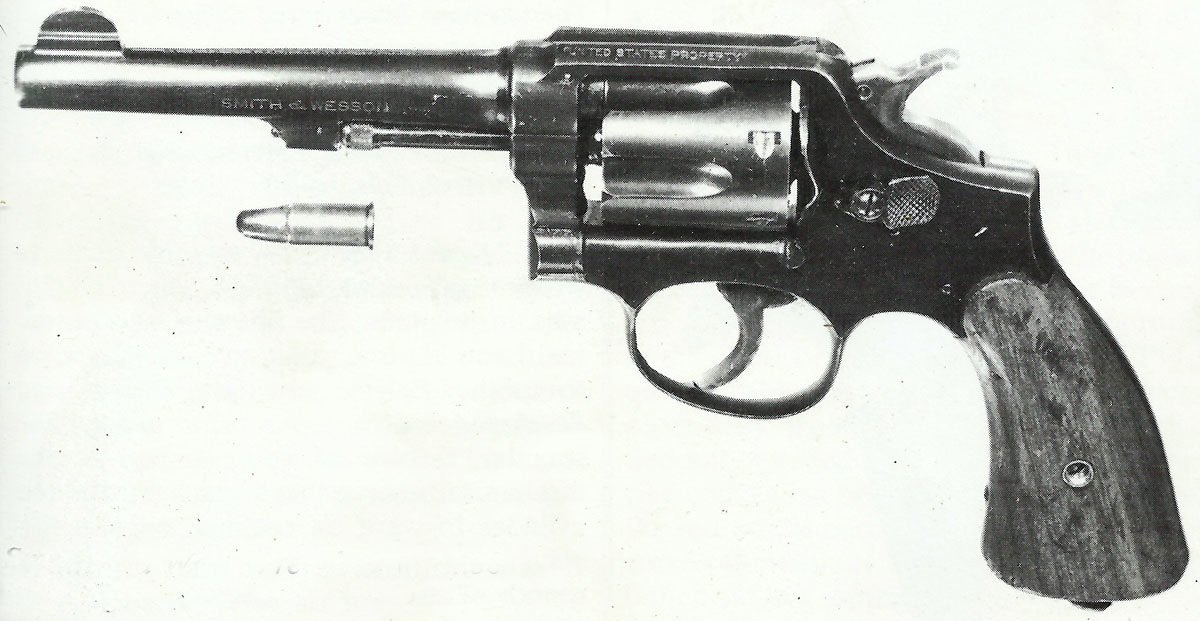
Smith & Wesson .38in
Type: Revolver.
After the heavy losses of material in Dunkirk in 1940 and the rapid expansion of the British army, which had to be re-equipped, the British government began to buy numerous weapons in the USA.
Among the items on the shopping list was a revolver and a contract was signed with Smith & Wesson to produce a model suitable for the British Army’s standard 0.38 inch (9.65 mm) cartridge. The resulting weapon was the ‘British Military’ or ’38/200′ Model, which was developed from the standard Military and Police .38 revolver, which had been commercially available for several years. The chambers were dimensioned for the British cartridge.
As with most Smith & Wesson designs, the chambers had a small cutout at the end of the cartridge case, which effectively prevented the use of longer and more powerful commercial cartridges.
The first deliveries were made to the Smith & Wesson standard of excellent blued and polished steel with checkered walnut handles carrying the S&W silver medallion. These early models were supplied in three barrel lengths (4in, 5in and 6in). The two shorter versions appeared less often.
After April 1942, under the pressure of the war economy, the surface was sandblasted and the handles were made of smooth walnut without the medallion. At that time only the model with the 6-inch barrel (15.24 cm) was produced.
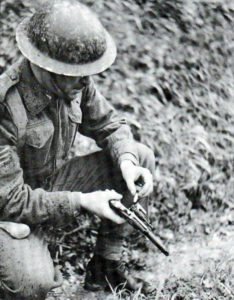
The usual restrictions on the use of revolvers by infantrymen, officers and specialists also applied to the Smith & Wesson revolver. Nevertheless, it can be said that this was undoubtedly the most popular revolver ever issued.
Light, balanced, precise and reliable, it was a better weapon in combat than the Enfield or Webley revolver and was often used by commandos and airborne troops.
It was issued to all units of the British armed forces, many also went to the Commonwealth forces and even to various resistance groups on the European continent.
The pistol was a strictly orthodox design that was conventional in every respect. It was simple in design and operation and embodied both Smith & Wesson’s excellent craftsmanship and British requirements.
The resulting weapon was extremely robust. It was so outstanding because the production of English revolvers could never keep up with the needs of the British armed forces, so Smith & Wesson filled more than a gap.
However, it suffered from a slight mechanical defect, as the main spring tended to adopt a permanent setting after several years of use, which weakened the hammer blow.
This was never objected to during its earlier use as a police revolver in the USA and only occurred after several years of warfare by British soldiers. Because the military ammunition needed a somewhat harder impact on the cap than the civilian ammunition in order to function. The repair, however, was a simple matter and the occurrence of this defect never affected the popularity of the weapon.
Usually the pistol was carried in a closed leather or webbing holster that covered the hammer, so the problem of getting caught was not as acute as with the Enfield revolvers.
British soldiers would normally wear the revolver on a string around the waist or neck to prevent an opponent from snatching the pistol from close range.
There are no reports that the weapon once failed in combat, even if it was used under the most terrible conditions.
Between 1940 and the end of production in 1946, over 890,000 revolvers of this type were produced and issued. Many are still in use today and it took well into the 1960s for the first British units to replace them with Browning HP’s.
Specifications of Smith&Wesson revolvers
Specifications:
Specification | Smith&Wesson M1905 | Smith&Wesson M1917 | Smith&Wesson 0.38/200 |
|---|---|---|---|
Type | Revolver | Revolver | Revolver |
Caliber | 0.38 in (9.65 mm) | 0.441 inch (11.56 mm) British; 0.45 inch ball M1911 (11.43 mm) US | 0.38 in SAA ball (9.65 mm) |
Length | 10.08 in (25.6 cm) | 10.8 in (27.4 cm) | 10.125 in (25,7 cm) |
Weight | 1.88 lb (0.85 kg) | 2.25 lb (1.02 kg) | 1.94 lb (0.88 kg) |
Barrel | ? | 5.5 in (14.0 cm) | 5 in (12.7 cm) |
Feed system | 6 rounds chambered cylinder | = | = |
System of operation | Double action; solid frame, side-opening, hand ejector | Single- or double action; solid frame, side-opening, hand ejector | = |
Muzzle velocity | ? | 830 ft/sec (253 m/sec) | 650 ft/sec (198 m/sec) |
Service statistics:
Service statistics | Smith&Wesson M1905 | Smith&Wesson M1917 | Smith&Wesson 0.38/200 |
|---|---|---|---|
Manufactures | Smith&Wesson Arms Co, Springfield (Massachusets) | = | = |
Production delivery | May 1905 | 1916 for British forces; October 1917 for US forces | 1940 (for British forces) |
Service delivery | thereafter | thereafter | thereafter |
Final delivery | 1953 (for civilian market) | January 1919 for US Army, 1938 for Brazilian forces | 1946 |
Production figure | total 2,500,000 | over 325,000 (153,000 for US Army, 25,000 Brazilian forces) | 890,000 |
Price per unit | ? | ? | ? |
Animated 3D model Smith&Wesson Modell 29 Magnum (1955)
More about the ‘Dirty Harry’ Smith&Wesson Modell 29 Magnum revolver.
Shooting with various handguns and long arms, including cal.45 Magnum revolver (as third weapon):
References and literature
The Encyclopedia of Weapons of World War II (Chris Bishop)
The Encyclopedia of Infantry Weapons of World War II (Ian V.Hogg)
Infanterie im 2. Weltkrieg (J.B.King, John Batchelor)
Illustriertes Lexikon der Waffen im 1. und 2. Weltkrieg (V. Dolinek, V. Francev, J. Sach)
The Illustrated Encyclopedia of Weapons of World War I (Chris Bishop)
An Illustrated History of the Weapons of World War One (Ian Westwell)








